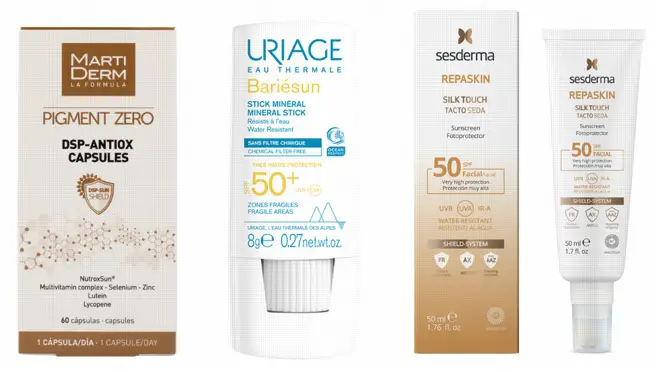The spots on the skin are increasingly worrying men, especially because they usually appear in highly visible areas such as the face or hands. In addition to an aesthetic problem, there is the one who takes years, the sleeves can become a health problem. That is why it is important to pay attention to them and go to a dermatologist who can assess them. “The type of spot that is most frequently observed in men is solar lentigines. But a precise assessment by the dermatologist is important, since the diagnosis can be complex and they must be distinguished from other types of spots such as seborrheic keratoses (usually raised), moles or nevi (which can be benign or even malignant) and melasma, a type of pigmentation alteration related to hormonal changes”, says Dr. Ignacio Sánchez-Carpintero, head of the Dermatology service at the International Dermatological Clinic.
Why are the spots on the skin?
The hyperpigmentation of the skin (as the sleeves on the skin are called) responds to an overproduction of melanin, the pigment that gives the natural color to the skin, hair and eyes. Sunburns occur for a variety of reasons, but the most common causes are sun exposure, genetic factors, age, hormonal changes, and skin injuries or infections such as acne.
In this case of men, Dr. Ignacio Sánchez-Carpintero explained that the most common sleeves are solar lentigines, caused by exposure to the ground without protection. “It is a type of flat spot, well defined, with precise edges, without flaking or volume. In general, men protect themselves less from the sun and do not have sun protection habits as incorporated, such as the use of photoprotective creams”.
 Essential sun protection to prevent skin damage. -Unsplash
Essential sun protection to prevent skin damage. -Unsplash
If you have acne, use a facial sunscreen
The spots can also appear associated with acne. "Sometimes acne lesions, once healed, can cause residual pigmentation, usually temporary, known as post-inflammatory pigmentation," says the dermatologist. That is why it is so important that you use a high sunscreen on your face every day. To treat this type of sleeves, if they have already appeared, the expert recommends using creams that incorporate retinoic acid or azelaic acid into their formula.
Can sun spots be prevented?
Be careful if you avoid exposure to the ground during the central hours of the day (between 12 and 4 in the afternoon, sober everything in spring and summer), and use photoprotector all year round. Logically, sun protection must be adequate at all times. In winter, the area is usually exposed to the face, hands or bald spot (often forgotten). In spring and, above all, in summer, you also have to protect your arms, legs, back, feet...
 From left to right: Pigment Zero DSP-Antiox Capsules food supplement from Martiderm (€27,90); the Bariésun Stick Mineral SPF50+ facial protector from Uriage (€12); Respaskin Silk Touch SPF 50 facial photoprotector from Sesderma (€25,96). -DR
From left to right: Pigment Zero DSP-Antiox Capsules food supplement from Martiderm (€27,90); the Bariésun Stick Mineral SPF50+ facial protector from Uriage (€12); Respaskin Silk Touch SPF 50 facial photoprotector from Sesderma (€25,96). -DR
Normally we associate the use of sun creams with days at the beach and pool, but the reality is that there are other situations in which you should also use them: when you go running or cycling, when you enjoy the mountains, when you are on a terrace drinking something… In addition to sun creams, you should use physical protection such as caps and hats on your head, sunglasses, to protect your eyes and their surroundings, or light clothing to cover sensitive areas, such as your back, if you have moles or acne, or shoulders, prone to burns.
On the other hand, the oral photoprotection (a complement to creams, and never a substitute) is also an ally to avoid sleeves, since it complements the topical photoprotector and reaches where it does not.
What to do if you already have spots?
All skin phototypes can suffer spots. Men with lighter skin are more likely to develop them at younger ages. But men with darker skin will also suffer from them, especially if they abuse prolonged exposure to the sun without protection. Doctor Sánchez-Carpintero's recommendation is to “go regularly to the dermatologist's office. The response to treatment is usually better and faster when the sleeves are incipient and there are fewer of them”. Regarding the best treatment to eliminate them, once they have already appeared, according to the dermatologist it is the Q-Switched laser. “It is only recommended, to obtain optimal results, the application of three sessions with a monthly periodicity. The treatment will be tolerated very well and without precision in the application of anesthesia, being carried out in the office in 5-10 minutes”.
Themes
SkinDermatologyBeauty treatmentsCosmeticsBeauty
